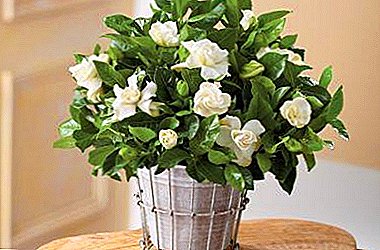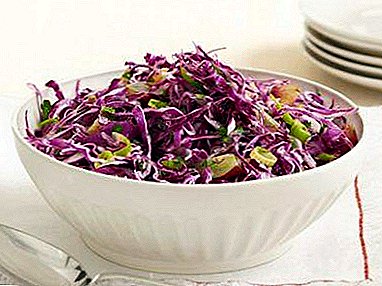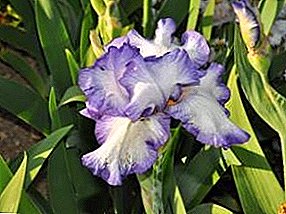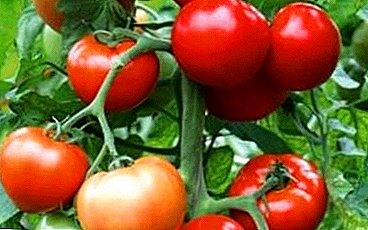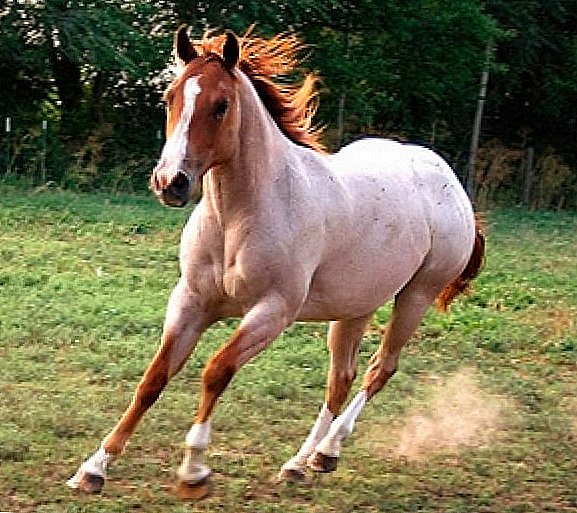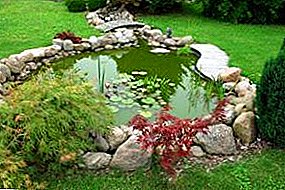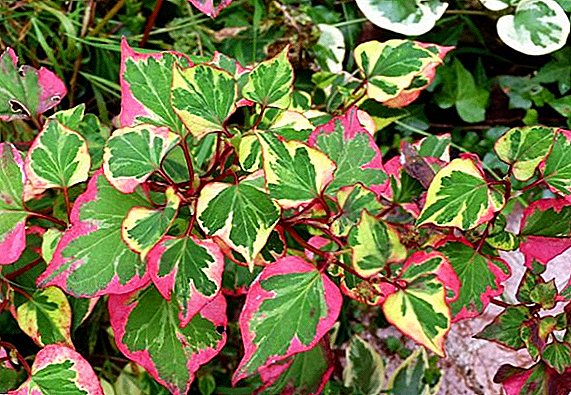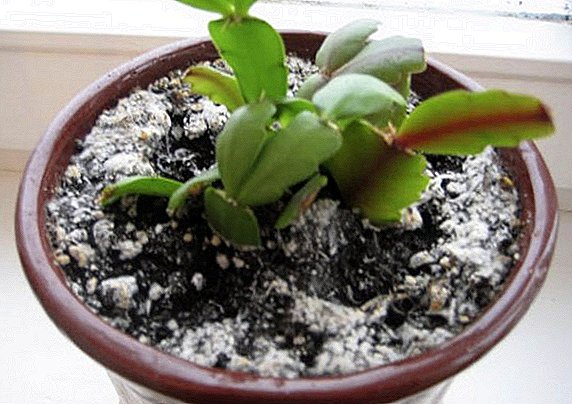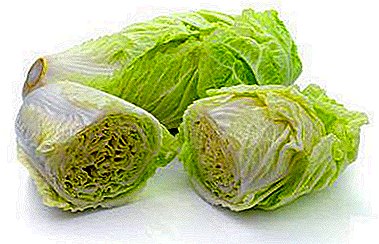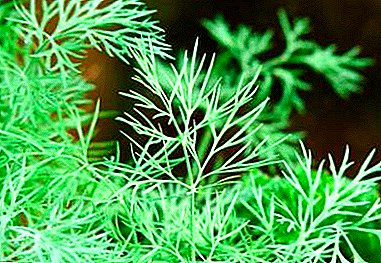
Dill variety Alligator is popular among summer residents for several reasons: it is unpretentious in care, dill seeds are readily available, it is distinguished by high yield and is almost not susceptible to disease.
Its useful properties allow you to deal with various human diseases. In this article we will talk about the peculiarities of the Alligator dill variety, the benefits and harms of the plant, its use in traditional medicine recipes.
You will also learn about the rules of planting, growing and caring for this variety at home and in the open field, harvesting and harvesting.
Description of the type, characteristics and photos
Bush fennel of this variety belongs to late-ripening plants., its harvest can be removed several times per season. In appearance, the Alligator is a small shrub, 25-40 cm tall, on average. Sometimes the height of the shrub can exceed 100 cm. Dill leaves are dissected, with a green-blue shade.
The ripening period of dill is 40-45 days - greens, 115 days, if it is needed for spices.
The loose black chernozem is most suitable for the alligator, but in other soil it can give a good harvest. Another advantage of the Alligator is its resistance to low temperatures. It is possible to sow the seeds of this variety of greens twice a year: in late autumn and in early spring.



History and geography of distribution
Dill Alligator appeared thanks to the company "Gavrish". Employees of the Moscow breeding agrarian enterprise bred such a variety in 1999. It was included in the State Register of Breeding Achievements in 2002.
Benefits and Contraindications of Eating
Dill is a useful and easy-to-use seasoning found on almost every table. Fresh greens have a positive effect on:
- general well-being of a person;
- the work of the gastrointestinal tract;
- helps with headaches and stress.
But it is impossible to say with certainty that dill can be taken by everyone and in any quantities. Dill Alligator contains many vitamins that are useful and necessary for humans, but you should follow the daily norm of nutrients in the body, especially for people with low blood pressure.
Use in traditional medicine
 Dill Alligator has a diuretic, antioxidant, bactericidal, choleretic, antiseptic effect on the human body. Dill helps remove toxins and improves overall health..
Dill Alligator has a diuretic, antioxidant, bactericidal, choleretic, antiseptic effect on the human body. Dill helps remove toxins and improves overall health..
If dill is permanently included in the human diet, then this greens:
- improves metabolism;
- accelerates the production of enzymes necessary for the stomach and gastric juice;
- normalizes the gastrointestinal tract;
- useful for colitis and gastritis.
Also dill Alligator has a calming effect on the human body. - reduces irritability, headache and nervous tension. Diuretic properties of dill, with the systematic use and use of extracts from the plant, free the body from excess fluid and puffiness. Seeds of dill Alligator and the greens themselves will help with bad breath. Dill destroy pathogens in the mouth.
Growing by seed and seeding
Description of crocodile dill planting:
The soil should not be excessively wet. For sowing seeds on the site you need to choose the right place. Despite the fact that the Alligator variety is unpretentious and hardy, favorable conditions will be the key to high yield.
Recommendations for choosing a landing site:
- the site should have uniform good lighting for a long time - not in the shadow of the house;
- neutral soil;
- you should not plant dill Alligator in those places where carrots, fennel and other umbrella plants used to grow;
- dill and parsley can not be sown next;
- ideal for the Alligator variety will be the soil on which solanaceous and leguminous crops were grown.
 Alligator beds should be located 15 cm apart. Seeds are laid in the soil to a depth of 0.5 cm in increments of 1.5-2 cm.
Alligator beds should be located 15 cm apart. Seeds are laid in the soil to a depth of 0.5 cm in increments of 1.5-2 cm.
After you sowed the bed, the seeds need to fall asleep with a mixture of peat and humus, 2-2.5 cm thick and tamped. There are no problems with dill planting, if you do not cut off the umbrellas that appeared during the growing season.
Dill Alligator will breed independently - The seeds will fall into the soil, and next year will again be bushes of fragrant greens.
Open field maintenance
The variety does not require specific and scrupulous care. For a good harvest, follow a few simple rules.
- Dill Alligator needs watering at least 1-2 times a week (for 1 sq. Meter 5 liters of water).
- Fertilizers are not required, the only feed that is suitable for increasing yields is feeding the soil before planting.
- Dill need to weed, loosen the ground and remove the weeds in the initial stage. When the dill of this variety produces 3-4 leaves, it starts to grow actively, and in this case weeds will not interfere.
Peculiarities of keeping at home
Variety Alligator suitable for planting at home. Suitable garden soil mixed with neutral soil for indoor plants. The landing box should be long to allow dill to develop normally.

- Put a drainage layer on the bottom of the pot.
- Seeds are sown on topsoil, without grooves.
- Top can be filled with soil.
- It is necessary to moisten the earth and put the box in a dark and warm place, and after a couple of weeks move it to the window sill.
Dill - light-loving culturetherefore, in winter, even on the windowsill, dill will need additional illumination with a fluorescent lamp at least five hours a day.
Dill also need daily watering, but the plant can not be poured, every few weeks - fertilizing with complex fertilizer. Seeds can be pre-soaked in potassium permanganate. The first greens with proper care will appear in a month. You only need to cut the side branches.
The time of vegetative development of dill is small. For fresh harvest need to do new crops.
Pests and diseases
Alligator is practically not subject to the most common diseases of crops.
- Medium resistant to powdery mildew. May get sick at the end of summer. Affected plants have a whitish plaque on the stems and leaves.
- Most often the Alligator suffers from fusarium (wilt). The reason may be the temperature drop. To protect the plant, seeds before planting should be soaked in a solution of potassium permanganate or phytosporin.
- In the rarest of cases, the plant may suffer from fomoz.. In this case, the plants cover brown spots and they dry out. Prevention of this disease will be treatment of beds with a solution of Fundazole and spraying of plants with a solution of boric acid twice a season.
Collection
The first crop of green, on average, harvested 30-40 days after planting. Some gardeners practice selective collection, others - solid. The most valuable in taste and benefits for the body is young fresh greens, about 5 cm in size. If the greens are not collected on time, then the plant should be cut off completely, otherwise the inflorescence will form and the culture will lose taste.
The simplicity of care, unpretentiousness and excellent taste qualities of the Alligator variety have made it one of the most popular green plants among gardeners. Due to its cold resistance, it can grow throughout Russia, even in the northern regions.


